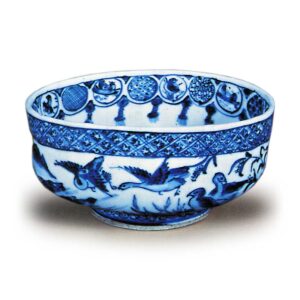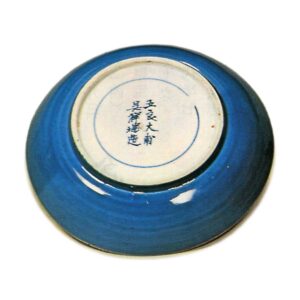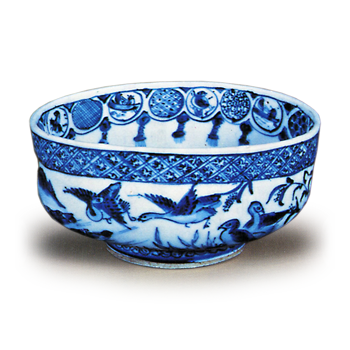

Among tea utensils, there is a group of underglaze blue porcelain called shozui or shozuite. The reason why they are called “Shozui” is that some of them have a two-line vertical inscription on the back: “Goryang Dafu Wu Shozui Zukuri”.
How to judge this inscription, and how to understand that these vessels are so exquisitely made that they do not seem to have been made in Japan, but at the same time they are designed in a very Japanese manner, are questions that have long been difficult to answer, and there have been many theories about Shozui pottery. Some say that both Wu and Xiangzui are place names, while others say that they are personal names, with some saying that they are from the Muromachi period and others saying that they are from the Momoyama and Edo periods. There is also a compromise theory that Goryang Dafu is Japanese and Wu Xiangrui is Chinese. There is also speculation that Wu Xiangrui is Chinese and Goryang Daifu is Japanese. The quality of the raw materials, the careful style, and the Japanese design were the result of a specific order from Japan, and the owner of the order, Kobori Enshu, or someone close to him. The owner of the order, Kobori Enshu, or someone close to him.
Although there is still much mystery as to how the Shozui inscription can be interpreted, it is a reasonable assumption. There are tea bowls (kutsu-shape, cylindrical shape, body-finish, Shuhama, etc.), tea caddies, incense containers, incense containers, incense containers, water jars, lid rests, hi-iri, kinzutsu incense containers, etc., as well as Ru ware Suiban Shozui kutsu-shape tea bowl or several pieces of tableware. These include yuanshozui, which are slightly older than authentic shozui, and shozuite, which are somewhat broken down, as well as shozui in near-color, such as Tenkei red glaze, Nanjing red glaze and Nanjing red glaze.



